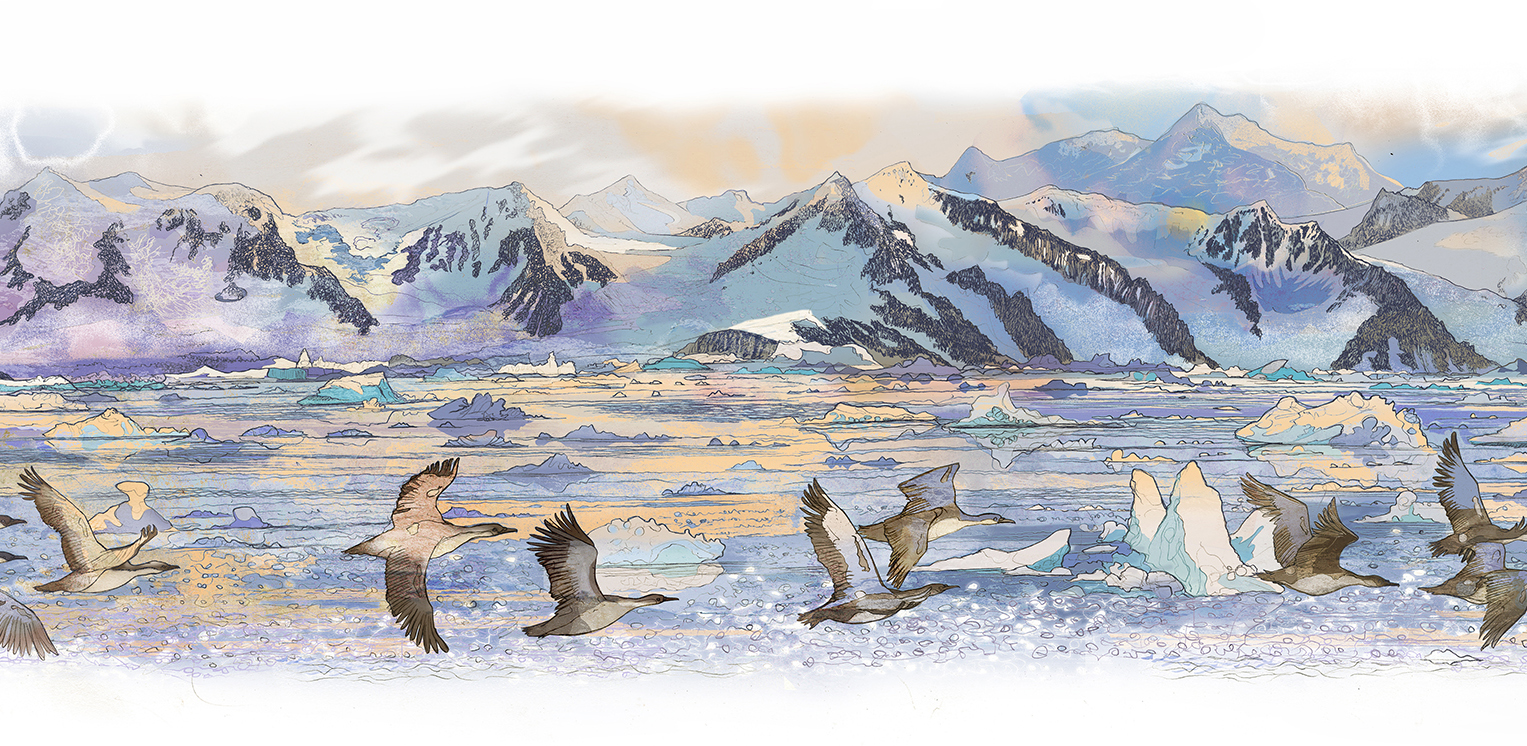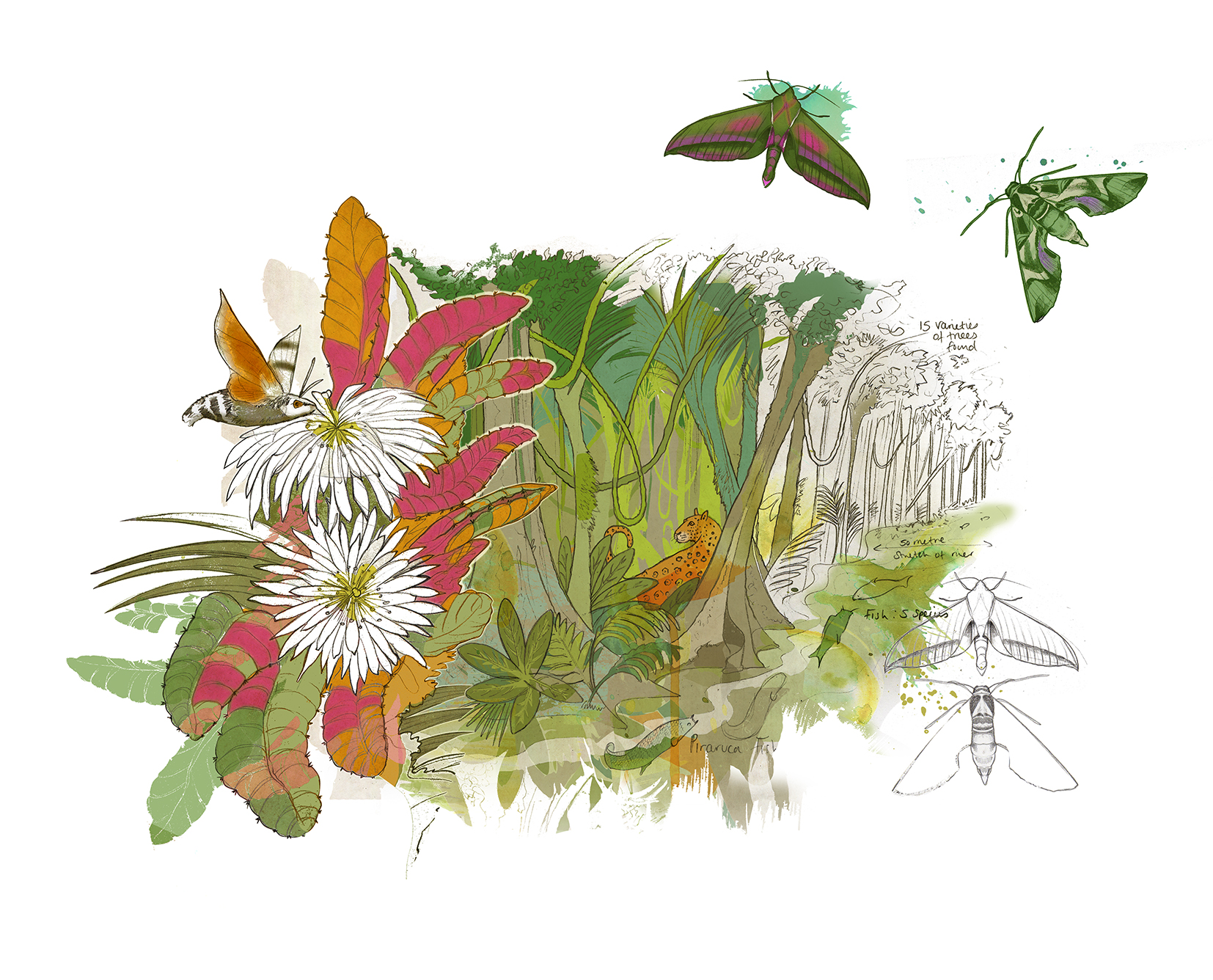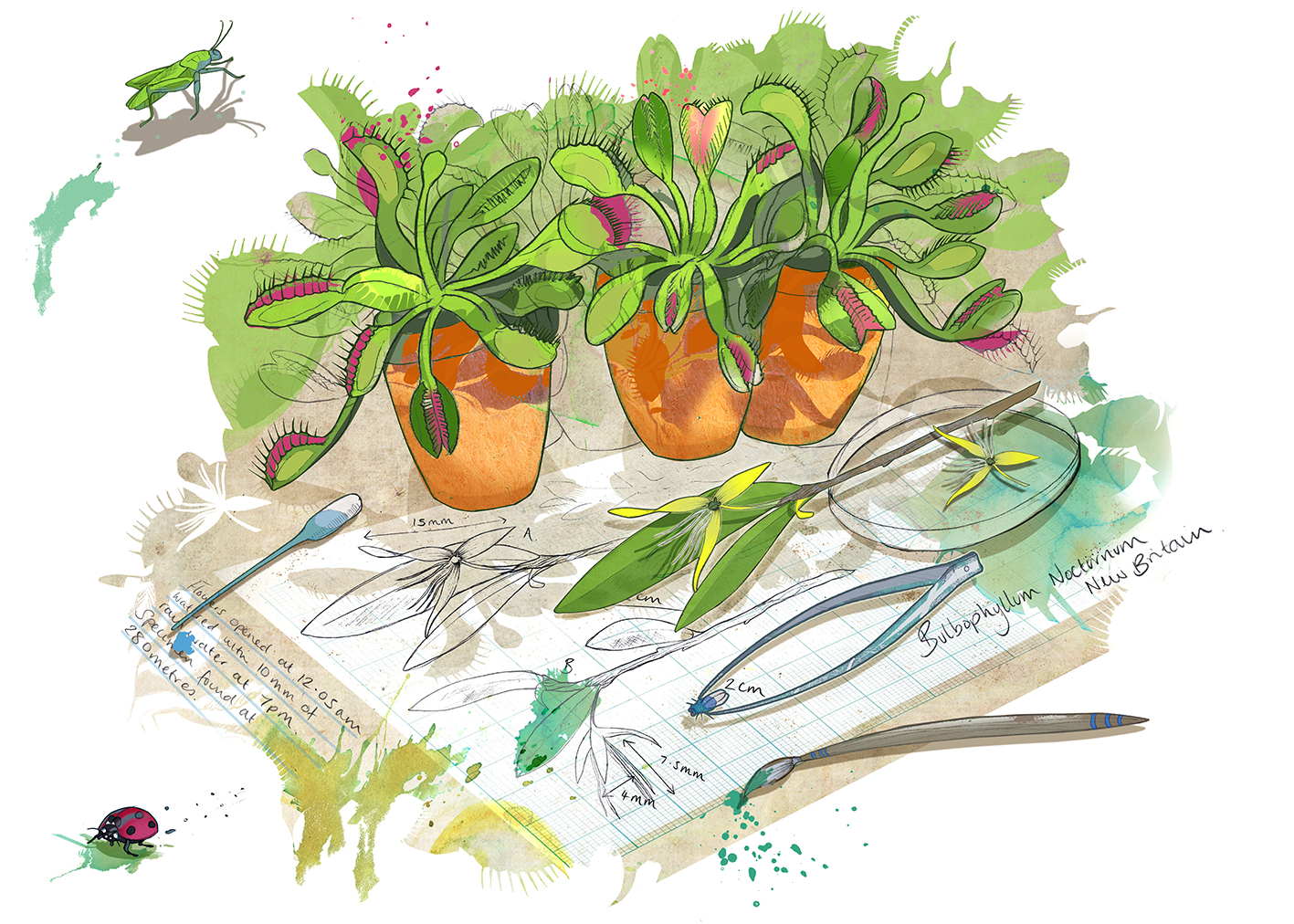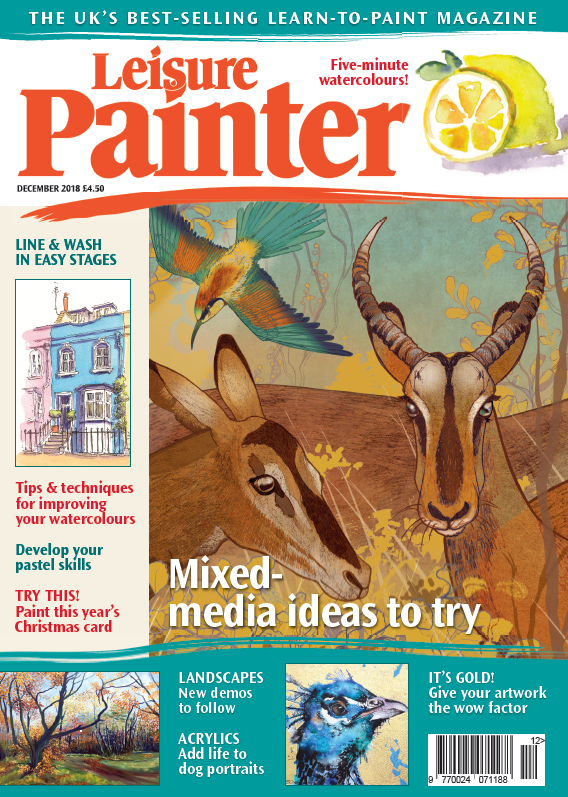Hi, I'm wildlife and travel artist Shelly Perkins. This is the place to find out a little more about me and gives answers to some commonly asked questions about my work and life as an artist. You can find out more information on the 'About' page too!
All of the work for sale on this website is created by me using the techniques outlined below. Orders placed here are created, packed and posted by my own hands! If you have any questions about any of the work please get in touch via the contact page and I will be happy to help you.
Thank you for your interest and support for my work. 
What is a Digital Collage?
I work in an unusual way combining traditional drawing and painting with digital collage techniques resulting in highly detailed, and multi-layered digital artwork from which I create just 50 limited edition prints. I start with detailed pencil line drawings, watercolour washes and other painted textures as well as textiles like fake-fur. I take these elements and scan them into the computer, layering the elements into collages using Adobe Photoshop as a tool. This program allows me to create many-layered works of art, with my line work on the uppermost layers and my textures and washes on many layers beneath. Any one piece often comprising as many as 200 different layers of line, wash and detail.

What is a Digital Print?
All of my studio work is sold as limited edition digital prints. A digital print is the physical representation of a file sent from a computer to a printer which then produces the design in accordance with the file information it received. My digital prints are the sole physical output for my digital collages, they are not copies of original artwork but the representation of the image that I have created on screen using a mix of my scanned elements and the process of collageing them together digitally. As a result, my prints are of high clarity and radiant colour truly representational of the original piece created using these techniques. I have my own fine art printer and produce all my prints myself to maintain the highest standards of quality.

What is a Giclee print?
A Giclee Print is a type of digital print. The term 'Giclee' means 'to spray' and references the way the inks are sprayed down finely onto the page by the printer. Giclee prints are the best way to produce artwork digitally as the inks are incredibly lightfast and will last for up to 150 years before they begin to fade. All of my prints are Giclee meaning they are of the highest possible print quality of digital print. I use a HP Design jet printer to produce all of my work. Each of my finished pieces is printed just 50 times making each one a scarce and collectable piece of art.

How do you find inspiration for your artwork?
My work is inspired by the landscapes and wildlife that I experience on a daily basis where I live in rural Worcestershire as well as my travels around the globe. My trips abroad are normally focused on where I can view animals that I want to see in their natural habitat. To that end my travels have taken me to all seven of the worlds continents. I have seen feeding humpbacks in Antarctica and hunting wild dogs in Zambia; Ibex fighting on high Alpine meadows in France; Wolves in Yellowstone; Bears in California; Koalas in Australia; Pels fishing owls in Botswana; Penguins in the Falklands; Fire Salamaders in Slovenia; Rhino in Namibia. But inspiration can come as easily from less exotic travels, a fox trotting across a frozen football pitch in central Birmingham or sparrows fighting on a bird feeder outside your window can be equally inspirational if viewed with an open and creative mind.

What is Wildlife Art?
Wildlife art is seen in many forms and styles but universally the artist seeks to represent the natural world through their own interpretations and ideas. That might be highly detailed photo-representational oil paintings, right through to very quick mark making done in the field. Like me, other wildlife artists will generally have a fascination and wonder for the natural world and seek to emulate its beauty and often its fragility through their work. Many artists create work to represent conservation projects. I have worked for many wildlife organisations creating work that showcases conservation projects both in the UK and further afield.

How do you become a Wildlife Artist?
To become a wildlife artist you need to possess a passion for wildlife and the natural world and a desire to represent that in your artwork. Understanding basic animal anatomy is a good foundation for your work. This can start with viewing skeletons in museums through to studying domestic animals and the way they move. Being able to express an understanding of nature and the habits/behaviour of specific species is vital. A knowledge of how your subject inhabits its surroundings and where in the world it can be found is also very valuable. Honing your work towards this subject matter through viewing wildlife in the field is an important way of developing your work. Building a strong portfolio of wildlife artwork in which the style and subject matter are consistent will enable you to move your work into the field of wildlife art enabling you to approach galleries or shows that specifically look for wildlife art for their exhibitions.

How do you obtain commissions for wildlife art/ wildlife illustrations?
Commissions for wildlife art or wildlife illustrations can be obtained from many different sources. My style of work lends itself well to working in the field of editorial illustration. Meaning many of my commercial illustration commissions come from magazines and publications where I am given a piece of text to create a visual response to along a wildlife or wildlife conservation theme. Obtaining wildlife illustration work is like any other field of illustration, you need to research the field in which you are interested in working then send a sample of your portfolio to the relevant editor or art director of that company or publishing house. Honing a cohesive portfolio of work that is a consistent style is important. Being able to demonstrate a good understanding of your subject matter and passion to work in your chosen field is important. A drive and determination to obtain your goals as well as a good work ethic is vital. Approaching illustration agents that may take you on as one of their artists is also a great way of breaking into the world of commercial illustration work.

Do you run courses?
I draw a lot of her inspriation from the natural world both near and far, I use my love of wildlife travel and wild places as a catalist for my work collecions. Sharing some of these detinations with like minded creative individuals is one of my great passions. Why not join me on a painting course in a wonderful location in a far flung destination? I run a small selection of painting courses each year, France, USA and Africa are some of the destinations I have led painting trips to, I also run painting days a couple of times a year near my home in rural Worcesteshire. To find out more about my course dates please join my mailing list.
What clients have you worked for?
I have completed a wide range of commerical illustration projects for a varied list of clients including:
BBC Wildlife Magazine
WWF
The RSPB
The Vincent Wildlife Trust
Cotswold Life
The Radio Times
Worcestershire Wildlife Trust
The National Trust
Leisure Painter Magaine
